A Discussion on Sustainability and Resilience in the Chesapeake Bay Watershed at the Chesapeake Research Consortium Symposium
Bailee Porter ·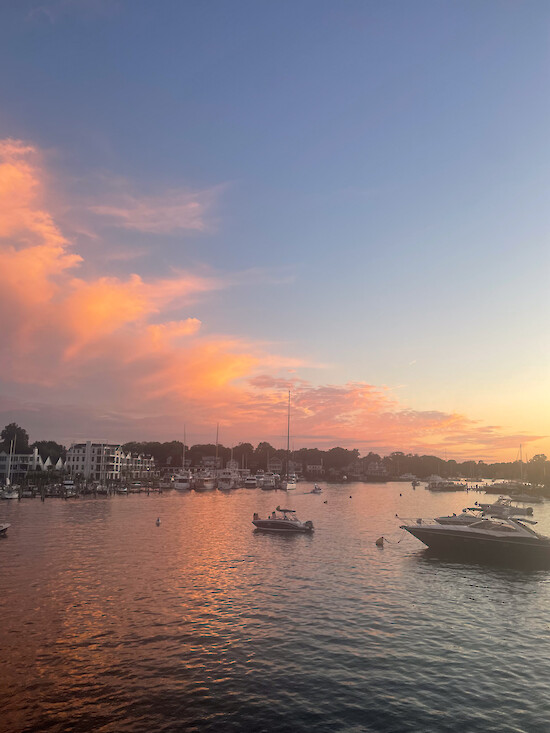
The Chesapeake Community Research Symposium 2024, held from June 10-12 in Annapolis, Maryland. Experts and stakeholders dedicated to the future of Chesapeake Bay gathered to attend this hybrid in-person meeting. Under the theme "Chesapeake Bay Restoration: Managing Water Quality for Living Resources in a Changing Climate," the symposium showcased the latest advancements in bay restoration, pressing challenges posed by climate change, and growing human impacts. Attendees participated in engaging talks, panel discussions, and special sessions, all aimed at refining strategies to protect and enhance the bay’s water quality and living resources amidst a shifting environmental landscape. Session 17 focused on the critical sustainability challenges and community resilience within the Chesapeake Bay Watershed. Many speakers shared their studies and innovative approaches under the theme of "Co-designing Solutions to Support Community Resilience."
Sidney Anderson and Kameryn Overton set the stage for day three of the conference with a presentation on the Coastal Ocean Assessment for Sustainability and Transformation (COAST Card) Project. Addressing socio-environmental challenges requires innovative tools. These tools help foster adaptive governance and collaborative actions. The COAST Card framework takes a transdisciplinary approach (5). It uses tools to assess and measure the health and relationships in an environment. These include tools like socio-environmental report cards, system dynamics modeling, and social network analysis. COAST Card originated from the successful report card model of the Chesapeake Bay and Watershed. This project is being implemented globally in regions such as the Potomac River Watershed (4), Tokyo Bay, Sekisei Lagoon, Manila Bay, and the Goa Coast.
In the Chesapeake Bay, the COAST Card initiative has benefited from the participation of Global Sustainability Scholars like Kameryn Overton. She helped facilitate interactive stakeholder listening sessions. These sessions foster inclusive dialogue, gathering diverse stakeholder perspectives on priorities, indicators, and potential threats. Topics highlighted include social vulnerabilities and inequities exacerbated by environmental changes. This has enhanced stakeholder engagement which ensures credibility, legitimacy, and impactful outcomes (6).
Leah Staub and her team from the United States Geological Survey (USGS) gave insights into water quality affecting vulnerable communities in the Chesapeake Bay Watershed. They utilized existing datasets to identify patterns and build frameworks contributing to the Justice40 initiative. This initiative highlights the intersection of historical neglect, present-day challenges, and future climate impacts. Disparities in social vulnerability often correlate with water quality challenges (7). This study uses a Social Vulnerability Index (SVI) alongside watershed-specific water quality models (2) to identify communities disproportionately affected by environmental hazards. The SVI assesses which communities are most at risk from nutrient pollution and sedimentation. Nutrient pollution, resulting from excessive nitrogen and phosphorus, deteriorates water quality and harms aquatic life. Meanwhile, sedimentation involves the accumulation of soil and organic matter, which clouds water and damages aquatic habitats.
Preliminary findings indicate significantly higher nutrient loads in vulnerable communities compared to other areas within the bay watershed. Understanding these disparities is crucial for targeted mitigation efforts and equitable resource allocation, aligning with federal initiatives to address environmental justice issues comprehensively (4).
The study on water quality conditions in the Chesapeake Bay Watershed highlights the intersection of environmental health and social equity (8). By quantifying the impact of water quality on vulnerable communities, the research informs management to address environmental justice. This approach underscores the importance of data-driven decision-making in allocating resources and implementing policies that protect public health and enhance community resilience.
Alisha Yee Chan’s discussion on the displacement of racial and ethnic minority groups following the installation of stormwater control measures (SCMs). This highlighted the unintended consequences of green infrastructure (3). While SCMs aim to reduce flooding and improve air quality, they can inadvertently lead to gentrification, displacing minority communities. This phenomenon, known as "green gentrification," underscores a critical need for more inclusive urban planning (1).
Chan emphasized the importance of environmental justice to ensure underrepresented groups benefit from SCMs without facing displacement. She is advocating for planning processes that actively involve minority communities and policies that protect affordable housing. By doing so, the benefits of green infrastructure can be equitably distributed, fostering more sustainable and resilient urban environments.

What stood out to me was the sense of community and collaboration during the conference. The room was filled with passionate individuals from diverse backgrounds, all guided by a common goal: to create a resilient Chesapeake Bay Watershed. It was inspiring to see government officials, scientists, community leaders, and program leaders come together, share their insights, and work towards a collective vision.
The discussions were not just about the data and models but about people's lives and the places they call home. Lili Badri’s recounting of community and real-time listening sessions brought to life the voices of those who have lived in the watershed for generations. Personal stories from those directly affected by these environmental changes we discuss are needed to show the importance of community involvement. Their voices need to be included in decision-making.
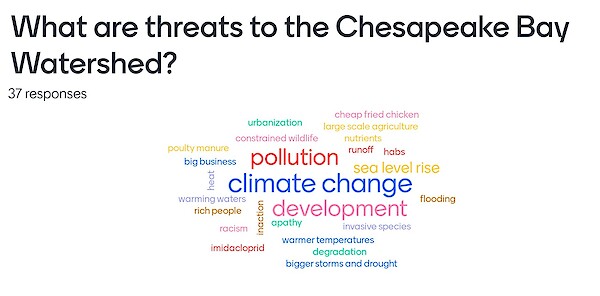
Community engagement is crucial for socio-environmental assessments. In the Potomac Watershed, listening sessions held across public spaces have empowered community members to articulate local environmental concerns and collaborate with experts on potential solutions. These sessions have highlighted shared environmental values and concerns across diverse locations, focusing on issues like environmental preservation and climate adaptation strategies.
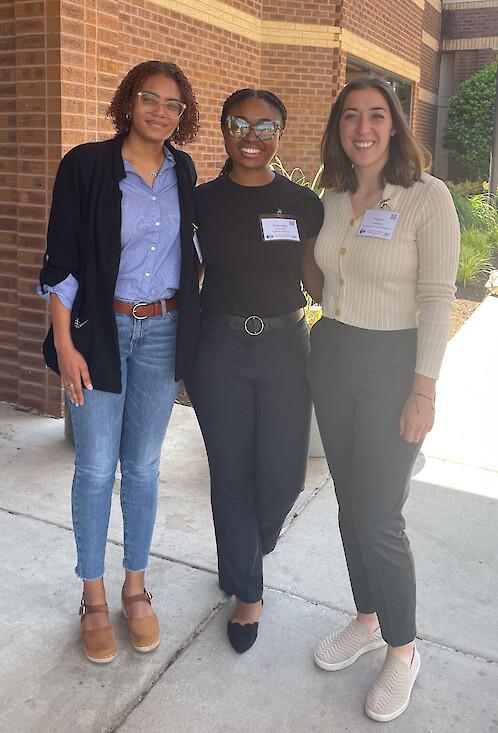
Photo of IAN team interns smiling outside of a hotel at CCMP Conference, June 12, 2024 by Bailee Porter.
Sidney Anderson ended this session on an important note, creating community visions that resonated deeply. It reminded everyone that true resilience starts with understanding and integrating the values and needs of the community. There was a clear emphasis on co-designing solutions, not just as a choice in methods but also as a decision to ensure that every voice is heard and valued. As the conference concluded, there was a shared sense of optimism, leaving me personally inspired with new ideas and a renewed commitment to collaborative efforts. A sustainable and more resilient Chesapeake Bay feels more achievable thanks to the vision created during this session.
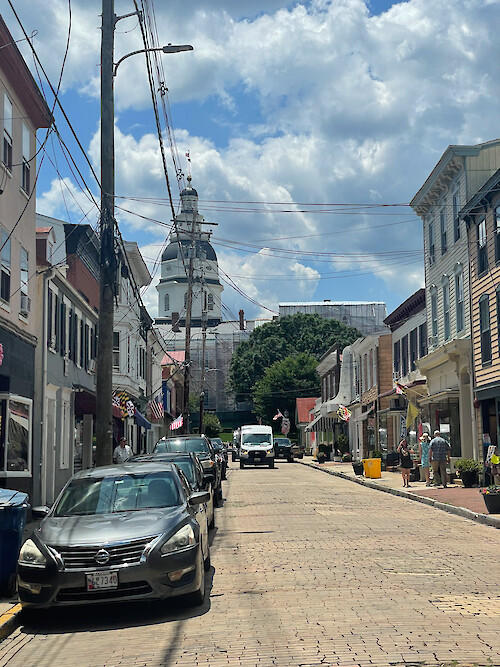
References:
- BCNUEJ. (2018). Green Gentrification - Barcelona Lab for Urban Environmental Justice and Sustainability. Barcelona Lab for Urban Environmental Justice and Sustainability. https://www.bcnuej.org/green-gentrification/
- CDC Social Vulnerability Index. (n.d.). https://data-chesbay.opendata.arcgis.com/documents/ChesBay::cdc-social-vulnerability-index/about
- Chan, A. Y., Son, J., & Bell, M. L. (2021). Displacement of Racially and Ethnically Minoritized Groups after the Installation of Stormwater Control Measures (i.e., Green Infrastructure): A Case Study of Washington, DC. International Journal of Environmental Research and Public Health/International Journal of Environmental Research and Public Health, 18(19), 10054. https://doi.org/10.3390/ijerph181910054
- COAST Card - study sites. (n.d.). https://sites.google.com/umces.edu/coastcard/our-research/study-sites
- Coastal Ocean Assessment for Sustainability and Transformation (COAST Card) (n.d.)., Projects, Integration and Application Network. https://ian.umces.edu/projects/coastal-ocean-assessment-for-sustainability-and-transformation-coast-card/
- Current and future challenges. (n.d.). Chesapeake Bay Foundation. https://www.cbf.org/how-we-save-the-bay/chesapeake-clean-water-blueprint/current-and-future-challenges.html
- Environmental justice. (n.d.). Chesapeake Bay. https://www.chesapeakebay.net/issues/whats-at-risk/environmental-justice
- Sekellick, A., Staub, L., Mohs, T., & U.S. Geological Survey, Maryland-Delaware-D.C. Water Science Center. (2023). Assessing water quality conditions in vulnerable communities in the Chesapeake Bay watershed. https://www.potomacriver.org/wp-content/uploads/2023/09/5.2_staub_sekellick_mohs_presforICPRB.pdf
About the author
Bailee Porter
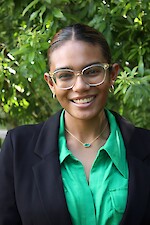
Bailee Porter is a Global Sustainability Fellow working with the Coastal Ocean Assessment for Sustainability and Transformation (COAST Card). This summer, she is conducting research to identify barriers to effective policy implementation and explore opportunities for improving sustainability and community resilience within the Chesapeake Bay Watershed, which can hopefully be useful in their report cards. Currently pursuing dual Master's degrees in Marine Science and Public Policy at Jacksonville University, Bailee is committed to using her skills to foster a supportive community that can bridge scientific expertise with policy-making to protect marine ecosystems.

